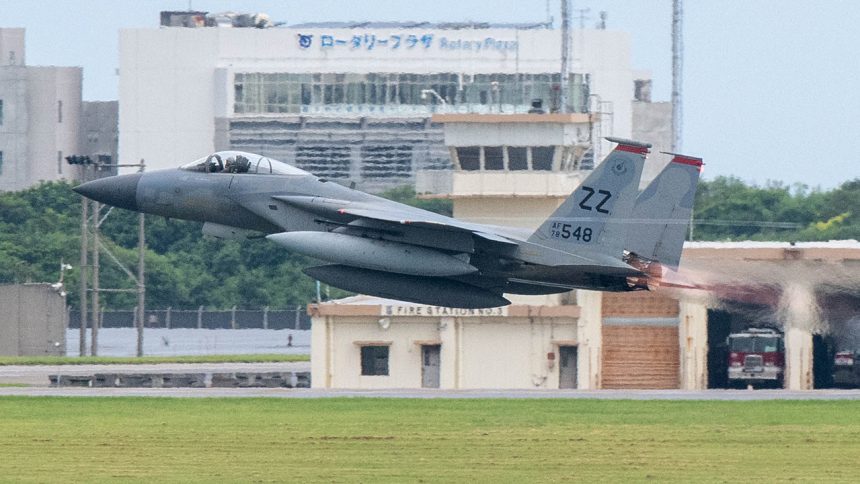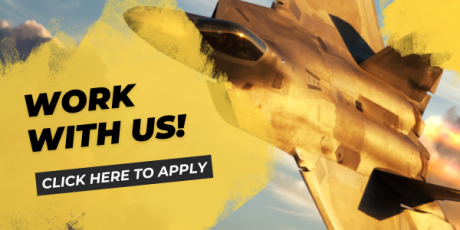As the F-15C nears the end of its tenure at the base, the Department of Defense has chosen the F-15EX Eagle II to carry forward the mission of ensuring air superiority in Kadena.
On Aug. 24, 2024, a formation of four F-15C Eagles departed Kadena Air Base, Japan, marking a significant step in the ongoing modernization of the base’s airpower capabilities. According to the U.S. Air Force, this departure signals a milestone in the gradual phase-out of the F-15C and the introduction of the new F-15EX Eagle II aircraft, which are set to take over the air superiority duty in the Pacific region. Noteworthy, the deployment of the F-15EX Eagle II to Kadena will mark the first to a base outside the continental U.S. for the most advanced iteration of the Eagle.
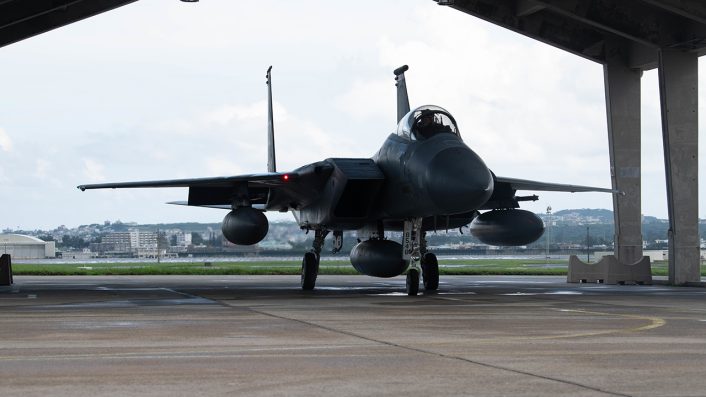
On July 3, 2024, the U.S. Department of Defense revealed a “modernization plan” aimed at bolstering its forces in Japan and countering potential threats from China. This plan includes replacing the 48 F-15 Eagles previously stationed with the 18th Wing’s 44th and 67th Fighter Squadrons at Kadena Air Base with 36 of the more advanced F-15EX Eagle II jets.
However, the timing for the arrival of these aircraft remains unclear, as three U.S.-based operational units are also awaiting delivery, suggesting that Kadena might experience a delay or receive its new jets at a slower pace.
In the meanwhile, the divestment of the legacy Eagles continues.
The four pilots leading the four-ship flight on Aug. 24, were Maj. Celestino Aguon, Maj. Alexander Frank, Maj. Robert Oehmke, and 1st Lt. Claire Carey, representing various units within the 18th Wing and 104th Operations Group. While these departing F-15Cs are destined either for retirement in the “boneyard” or to be repurposed for other Air Force units, their legacy remains deeply embedded in both Kadena’s history and the broader history of the U.S. Air Force.
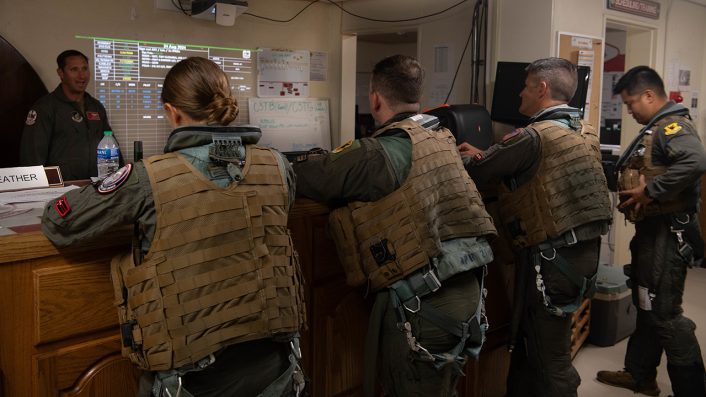
Lt. Carey noted the importance of Kadena Air Base as a crucial hub in the Pacific, stating, “It’s an honor to serve at one of the most important bases in the Pacific, flying one of the most iconic aircraft in the Air Force.” The F-15C Eagle, operational since 1975, boasts an unparalleled record of over 100 aerial victories without a single loss, embodying decades of air superiority.
As Kadena prepares to welcome the F-15EX, the base is hosting various deployed fighter units to ensure continued air defense and stability during the transition. These units fill the operational gap between the F-15C’s departure and the arrival of the Eagle II, as highlighted by SSgt. Evan Schneider, a dedicated F-15C crew chief. “The deployed units are maintaining security in the AOR while we focus on the divestment.”
The departure of the four-ship formation comes less than two weeks after the final flight of the F-15C A5095 that took place on Aug. 15, 2024, one day before the Eagle was decommissioned. Commenting the retirement of yet another Eagle, Staff Sgt. Clark Pacay expressed the pride and tradition associated with the aircraft, which has been instrumental in ensuring air superiority over the years. “To me, the F-15C means a long history of tradition with an undying legacy,” he said.
Looking forward, the introduction of the F-15EX Eagle II brings new capabilities to Kadena, offering enhanced multi-mission performance and ensuring that the base continues to project power in the Indo-Pacific region.
F-15EX Eagle II
The new F-15EX Eagle II, derived from the advanced F-15QA, has emerged in response to the evolving threats highlighted by the National Defense Strategy, focusing on countering challenges from China and Russia. While the F-15EX shares many similarities with the F-15QA, it incorporates exclusive U.S.-specific features, such as the AN/ALQ-250 Eagle Passive Active Warning Survivability System (EPAWSS) and the Open Mission Systems (OMS) architecture, enhancing its electronic warfare and surveillance capabilities.
Initially, the F-15C/D fleet was supposed to be entirely replaced by the F-22A Raptor, the Air Force’s first 5th-generation fighter. The plan was to purchase 750 Raptors to replace both the F-15 and the F-16 fleets. However, the program was scaled back, resulting in only 187 production Raptors being built, which fell short of replacing the roughly 230 F-15C/Ds still in service. Consequently, the operational life of the F-15 had to be extended, even though it was originally slated for retirement in 2019.
When the F-15X program, later known as the Advanced F-15, was conceived, both single-seat (F-15CX) and two-seat (F-15EX) variants were proposed, with identical capabilities. The Air Force ultimately chose the two-seat version, the F-15EX, which can be flown either by a single pilot or by a pilot and a Weapons Systems Officer (WSO).
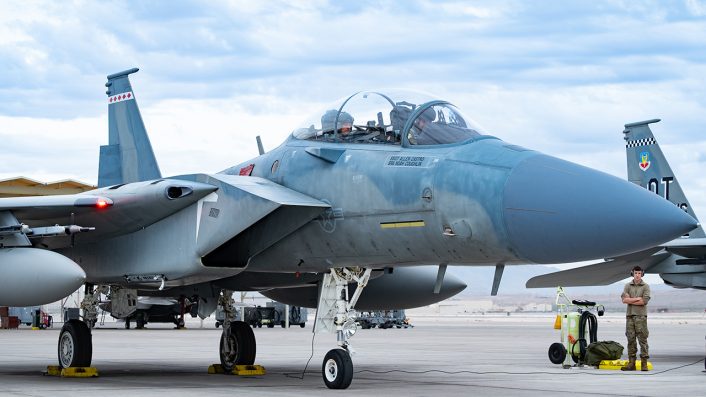
Last year, the F-15EX completed Phase I of its Integrated Test & Evaluation (IT&E), during which it participated in 19 Large Force Exercise events alongside 5th-generation aircraft, recorded the longest air-to-air missile employment, and validated the use of the longest non-nuclear air-to-ground munition in the Air Force’s inventory.
The new F-15EX Eagle II has recently reached the Initial Operational Capability (IOC) with the U.S. Air Force, a milestone announced by Gen. Kenneth Wilsbach, the Air Combat Command’s chief, on Jul. 10, 2024, while delivering remarks on a webinar hosted by the Mitchell Institute for Aerospace Studies, shortly after the 142nd Wing at Portland Air National Guard Base received its first F-15EX Eagle II.
As reported delivery of the first Eagle II to the Oregon ANG represents the first time a new weapon system is delivered to the Air National Guard before serving in the Air Force.
Initially, the Air Force planned to acquire up to 144 F-15EX aircraft. However, the procurement numbers were reduced to 104 last year, and the latest FY 2025 budget request plans to cap the fleet at 98 aircraft by concluding production after the last delivery in 2025. Despite this, the FY25 National Defense Authorization Act could reverse the decision, with the House Armed Services Committee authorizing $271 million for advanced procurement of 24 additional F-15EX aircraft for FY2026, potentially increasing the fleet size to 122 aircraft.
Additionally, the Senate Armed Services Committee’s markup included funding for six more F-15EXs beyond the service’s request for 18 in FY25, adding $690 million to the budget, reflecting the aircraft’s continued importance to U.S. defense strategy.

